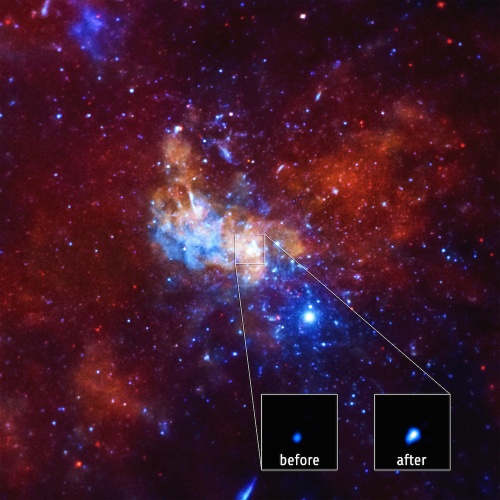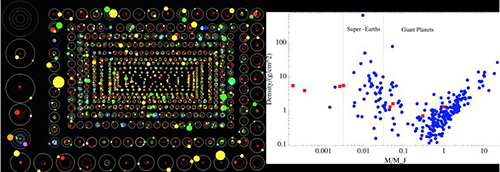
Image credit: NASA/CXC/Amherst College/D.Haggard et al., of the galactic center in X-rays.
One hundred years ago, Albert Einstein first put forth his theory of General Relativity, which laid out the relationship between spacetime and the matter and energy present within it. While it successfully recovered Newtonian gravity and predicted the additional precession of Mercury’s orbit, the only exact solution that Einstein himself discovered was the trivial one: that for completely empty space. Less than two months after releasing his theory, however, the German scientist Karl Schwarzschild provided a true exact solution, that of a massive, infinitely dense object, a black hole.
One of the curious things that popped out of Schwarzschild’s solution was the existence of an event horizon, or a region of space that was so severely curved that nothing, not even light, could escape from it. The size of this event horizon would be directly proportional to the mass of the black hole. A black hole the mass of Earth would have an event horizon less than a centimeter in radius; a black hole the mass of the sun would have an event horizon just a few kilometers in radius; and a supermassive black hole would have an event horizon the size of a planetary orbit.
Our galaxy has since been discovered to house a black hole about four million solar masses in size, with an event horizon about 23.6 million kilometers across, or about 40 percent the size of Mercury’s orbit around the sun. At a distance of 26,000 light years, it’s the largest event horizon in angular size visible from Earth, but at just 19 micro-arc-seconds, it would take a telescope the size of Earth to resolve it – a practical impossibility.
But all hope isn’t lost! If instead of a single telescope, we built an array of telescopes located all over Earth, we could simultaneously image the galactic center, and use the technique of VLBI (very long-baseline interferometry) to resolve the black hole’s event horizon. The array would only have the light-gathering power of the individual telescopes, meaning the black hole (in the radio) will appear very faint, but they can obtain the resolution of a telescope that’s the distance between the farthest telescopes in the array! The planned Event Horizon Telescope, spanning four different continents (including Antarctica), should be able to resolve under 10 micro-arc-seconds, imaging a black hole directly for the first time and answering the question of whether or not they truly contain an event horizon. What began as a mere mathematical solution is now just a few years away from being observed and known for certain!




